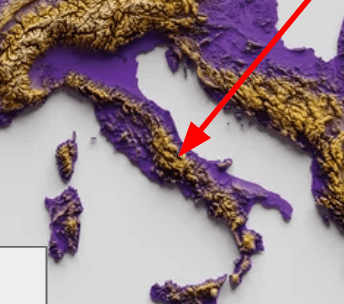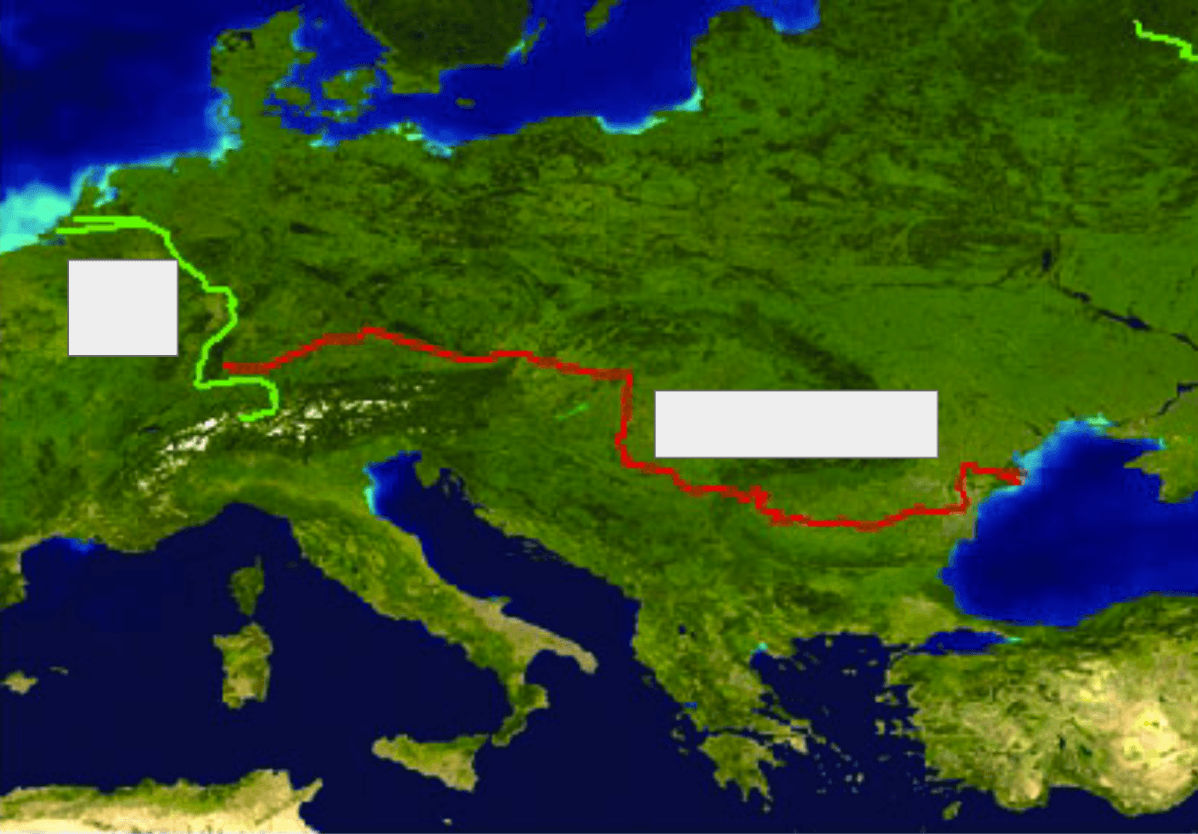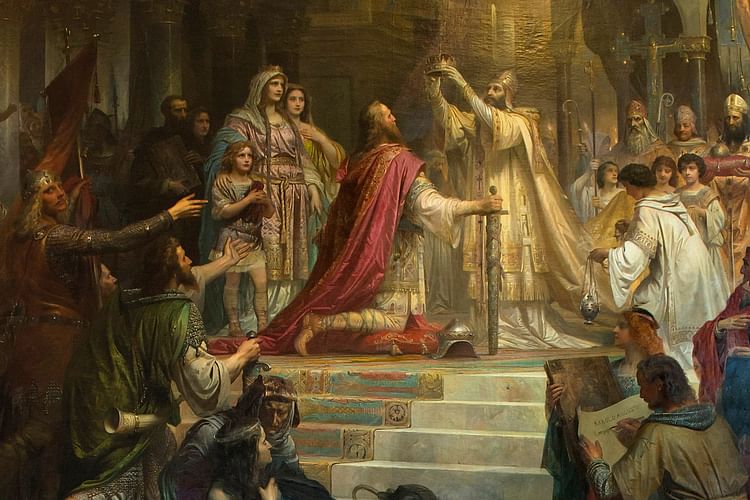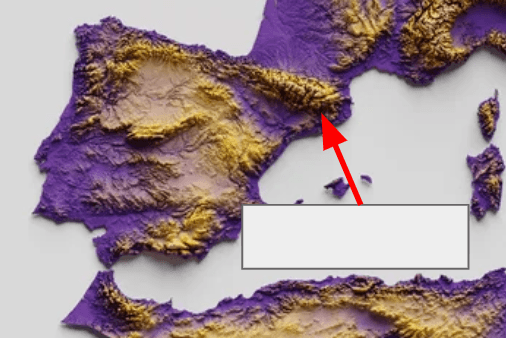Name that peninsula. 
What is the Italian Peninsula?
An image like this, which you might find in a church, is an example of a/an _____________.
![]()
What is an icon?
This is the date historians typically cite as the fall of the Western Roman Empire.
What is 476 AD?
Scandinavian invaders who ransacked monasteries, trampled on precious relics, and butchered defenseless monks for the sheer thrill of it, even forcing the survivors into slavery.
Who were the Vikings?
In the fourth century B.C., he conquered the entire known world, spread Hellenistic culture and the Greek language, and established many cities named after himself.
Who is Alexander the Great?
Name that sea.

What is the Mediterranean Sea?
One of the biggest threats to the early church was the rise of _____________ in the 7th century, a religion based on the teachings of the prophet _______________. You must answer both to receive the points.
Known as "the boy king," this last Roman emperor was ridiculed by his subjects as "little disgrace" before being deposed (but not killed) in 476 AD.
Who is Romulus Augustus?
What are The Franks?
In the 4th century A.D., he dramatically converted to Christianity, became the first Christian emperor, and moved the capital from Rome to Byzantium (which was later re-named after him).
Who is Constantine the Great?
Name that body of water.

What is the English Channel?
This 9th century dispute over the use of religious images in church ended in 843 with the Empress Theodora re-affirming their use (and appointing a patriarch named Methodios I who did the same).
What is the Iconoclastic Controversy?
They lived in the forested regions north and west of the Danube and Rhine rivers and included tribes like the Franks, the Goths, the Saxons, the Huns, and the Vandals.

Who were the Germanic tribes (or Germanic people?)
Throughout his reign as king, scholarship remained immensely important to this English ruler, who (after defeating the Vikings) issued the translation of many important manuscripts, including parts of the New Testament, from Latin to Anglo-Saxon.
Who is Alfred the Great?
In the 18th century, she became the empress of Russia following the overthrow of her husband, Peter III. She is known for Westernizing Russia.
Who is Catherine the Great?
The river marked in green is the ___________. The river marked in red is the ____________. You must answer both to receive the points.

What are the Rhine (green) and the Danube (red)?
The Great Schism of the 11th century resulted in the splitting of the church into the _______________ and the _______________.
To receive the points, you must answer both blanks and correctly indicate "east" and "west."
What are the Roman Catholic Church (West) and the Eastern Orthodox Church?
This Germanic chieftain became "Rex Italiae"--King of Italy--after deposing the last Roman emperor.
Who is Odoacer?
Describe 1) what this painting depicts and 2) when the depicted event happened. (You must address both parts of the question to receive points).

What is The Coronation of Charlemagne, 800 AD?
During the fifth century, he usurped Odoacer and brought the Italian Peninsula under Ostrogothic rule.
Who is Theodoric the Great?
Name that mountain range. 
What is the Pyrenees?
Name the five ancient patriarchates (or sees).
What are Rome, Constantinople, Alexandria, Antioch, and Jerusalem?
In conquering North Africa and building up the Vandal Empire, this ruler is credited with striking the final "death blow" to the Roman Empire during the fifth century.
Who is Geiseric?
The Frankish king Charlemagne was part of the _______________________ dynasty, which toppled the __________________ dynasty. (Must answer both parts of the question to receive credit).
What is Carolingian, Merovingian?
Genghis Khan, or the great Khan, united the disparate tribes of the Mongolian Steppe and created the largest land empire in history during this century/range of centuries.
What are the 12th-13th centuries?